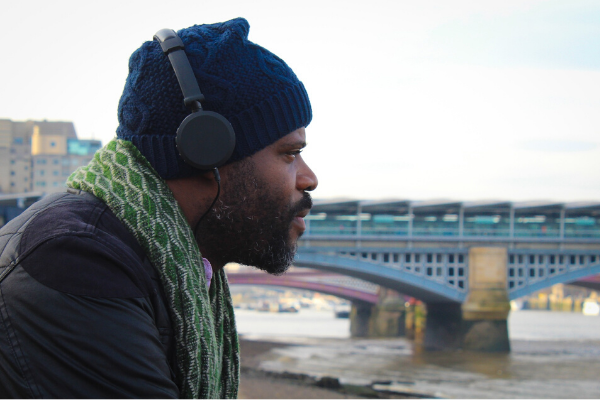Insights
INSIGHTS
All Topics
My Account
How can leaders provide digital support to their teams?
21 May 2020by Raabia Fazil
With the rise of mental health issues in the workplace, we explore how leaders can provide digital support to their teams
We live in stressful times. Even apart from the current global pandemic, stress, burnout and associated mental health issues lurk in the corners of the workplace. Spotting the signs of things going wrong is important to keep things on track and maintain wellbeing. We take a look at how leaders can provide digital support to their teams.
Buzzwords such as self-care and wellbeing abound but mental health issues can be serious for charities. The enormous personal impact of stress and mental ill-health on individuals affects the wider charity sector, too.
What’s going on
Unite, the largest union in the UK and Ireland, has discovered widespread stress affecting charity staff. Mental health-related absences are also rising sharply. This infographic sheds more light on the matter. In the nonprofit sector, 49% of short-term absences are due to stress and 31% of short-term absences are caused by mental health conditions such as clinical depression and anxiety. Research by CIPD found that the most productive ways to manage absence involve engaging with the underlying issues.
The cost of commitment
Dedication and passion are plentiful in the charity sector. Making real change drives motivation, ensuring that charity staff give their utmost efforts. Although, one cannot pour from an empty cup. And there are many demands on that one cup.
Working in the charity sector raises its own particular challenges. Deadlines, providing accountability and raising revenue to ensure that the show will go on, create pressure on individuals. Good mental health is good for the workplace. Although committed to their work, charity staff don’t always have a support network. Self-care for charity staff is crucial for both the organisation and beneficiaries.
‘Self-care is important’, says Lesley Dixon from social support charity PSS. ‘It’s all well and good just putting your all into it, burning out, and that’s not good for you as an individual, it’s not good for the organisation, it’s not good for people who use the services.’
The nature of the work can raise stress levels, too. The impact of frontline work in cancer charities, assisting vulnerable refugees or helping survivors of sexual violence, can take its toll on mental health.
"We work with a lot of Syrians who have come over on the government’s resettlement programme", says Maurice Wren from the Refugee Council, "and their level of traumatisation is higher than we’re used to from other resettled refugees. And that worries me because it means that we’re having to cope with that, we’re having to take that on."
Wellbeing with the web
Multiple digital tools have emerged as sources of help. The NHS and Mind are respected, reliable sources of information. There are also safe spaces online for people to connect and share tips and experiences, such as Elefriends. It is advisable to be cautious when chilling on social media as people tend to post their most perfect moments on Facebook, Instagram and more; although checking in with friends and family on social media can help people to feel better. There are a plethora of personal experiences shared on Youtube, Wordpress and Blogspot to help learn about how other people cope with similar issues.
The NHS has an extensive library of digital apps to help with managing emotions and take care of mental health whilst Be Mindful has an online course to help with stress and anxiety. Beat Panic helps fight panic attacks and anxiety on the move. There are lots of helpful apps out there - Sleepio, for example, helps ease racing thoughts and sleeping problems.
Headspace harnesses meditation to help users decrease stress, improve focus and sleep better. Happify provides tools to help users manage feelings and thoughts by using activities and games. As digital tools become embedded in our daily lives from socializing, work and more, their growing potential to aid wellbeing and dissolve the stress and pressures of work.
Beyond the dedicated mental health apps, you can use work management tools too. Scheduling projects and juggling tasks in Trello, Asana and more, you can set up team wellbeing tasks or create safe spaces allocated to teammates to discuss and share their experiences. You could try out some of the digital tools for mental health listed above across your team and find the ones that work best for individuals.
You could log on to Youtube, Wordpress and Blogspot to find similar experiences and concerns to those raised by staff and try gamifying with Happify to help work on wellbeing in a fun way.
With the range of digital tools at their disposal, charity leaders can take advantage of them to build wellbeing into the workplace and support their teams to go from strength to strength.
More on this topic
07 Mar 2025by Laura Stanley
An introvert’s guide to networking
27 Feb 2025by Laura Stanley
Charity Spotlight: Dr Anton Mari Lim, President, Yellow Boat of Hope Foundation
Recommended Products
Our Events
Charity Digital Academy
Our courses aim, in just three hours, to enhance soft skills and hard skills, boost your knowledge of finance and artificial intelligence, and supercharge your digital capabilities. Check out some of the incredible options by clicking here.

















